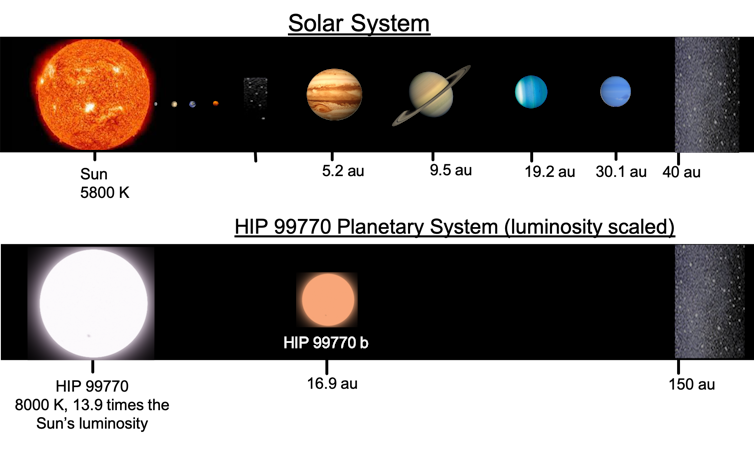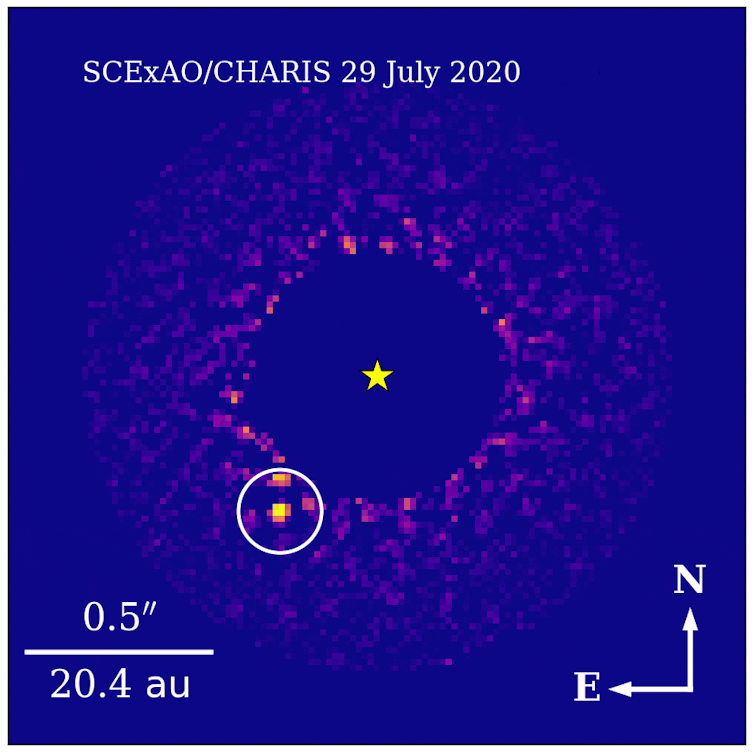Astronomers discovered HIP99770b, a 15-Jupiter-mass exoplanet using a groundbreaking hybrid method!
Key Takeaways
- HIP99770b is a massive exoplanet directly detected with a revolutionary hybrid technique.
- The approach combines indirect detection (astrometry) with direct imaging for improved precision.
- HIP99770b is a gas giant with 15 times Jupiter’s mass, orbiting a star like a scaled-up Solar System.
- Data from ESA’s Gaia and Hipparcos missions provided 25 years of stellar motion measurements.
- This discovery may redefine how we locate exoplanets and understand planet formation.
___________
A Breakthrough in Exoplanet Hunting
Astronomers have achieved a groundbreaking feat by directly detecting HIP99770b, a massive exoplanet 15 times the mass of Jupiter. This achievement, published in Science, highlights a novel hybrid detection approach that combines indirect astrometric data with direct imaging. The method offers an efficient pathway for identifying exoplanets, especially around massive stars that are traditionally challenging to analyze.
HIP99770b orbits its star at a distance between Saturn’s and Uranus’s orbital ranges in our Solar System. Despite its impressive size, its surface temperature of over 1,000°C renders it inhospitable for life.

Searching for Planets with Precision
Direct imaging of exoplanets is an extraordinary challenge, akin to spotting fireflies near a bright spotlight. It requires specialized cameras and powerful telescopes. As of now, only around 20 planets have been discovered this way. However, direct imaging provides invaluable information about a planet’s atmosphere, including its temperature and composition.
In the case of HIP99770b, indirect detection played a crucial role. Astronomers first noticed the star wobbling due to the gravitational pull of a nearby planet. Using data from the European Space Agency’s Gaia spacecraft and its predecessor Hipparcos, they analyzed 25 years of astrometric measurements to pinpoint the planet’s position. This precise data guided the direct imaging efforts, marking the first time this combined method successfully identified an exoplanet.
What Makes HIP99770b Unique?
HIP99770b offers an intriguing parallel to our Solar System. Its star is surrounded by a cold debris disk, similar to the Kuiper Belt but scaled up in size. Unlike our Solar System’s multiple smaller planets, the HIP99770 system is dominated by this massive gas giant.
Although the system’s age is debated, estimates range between 40 million years (if it belongs to the Argus association of stars) and up to 200 million years based on models of the planet’s brightness and star pulsations.

Implications for Future Searches
The success of this hybrid detection method has far-reaching implications for exoplanet studies. Traditionally, planets around massive stars like HIP99770, which is nearly twice the mass of our Sun, have been elusive due to precision limitations in standard techniques. By combining astrometry with direct imaging, astronomers can now efficiently locate and study planets in such systems.
ESA’s Gaia mission, expected to continue until 2025, will provide even more detailed data for future discoveries. This new method could accelerate the hunt for potentially habitable planets and deepen our understanding of planetary systems.



